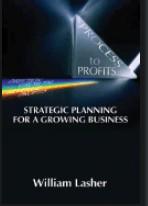Answered step by step
Verified Expert Solution
Question
1 Approved Answer
Part I Part one requires qualitative explanations that display your understanding of the concepts of risk and return. The article of Simon Hoyle gives some
Part I
Part one requires qualitative explanations that display your understanding of the concepts of risk and return. The article of Simon Hoyle gives some understanding of the concepts of risk and return. However, it was published in a newspaper where the target readers were not all educated in finance. You are required to answer the following questions while providing deeper insights about the concepts of risk and return than those that are provided in the article.
Read the article by Simon Hoyle and answer questions 1-4.
Baked beans a lot more predictable than shares BY SIMON HOYLE
11 March 2006
The Sydney Morning Herald
THE price of a tin of baked beans doesn't change much from day to day. The price of
a companys shares, on the other hand, can change quite a lot. In investment terms, the price of the baked beans isn't as volatile as the share price.
While you might have a good idea of how much a tin of baked beans will cost you whenever you go 10 buy one, you can't be as certain about the price of a share. IBut there are ways you can make educated guesses about what the price of a share might do over a period of time. In other words, you can make educated guesses about the range of likely future outcomes, and hence about likely future volatility. A common way of measuring an asset's riskiness, or volatility, is the "standard deviation" of the asset's returns. Standard deviation is a statistical method of calculating the most likely range of returns from an asset. It is the method that analysts use to make long-term predictions from short-term data.
If you were to plot the returns from an asset on a graph, where the horizontal axis is the return the asset achieves every day, week or month, and the vertical axis is the number of times that return occurs, you'd get what's called a "distribution curve". This looks like a bell, and for that reason it's also sometimes known as a bell curve. What a bell curve tells you is that an asset's returns tend to be clustered around a certain number, and the further from that number you move along the horizontal axis, the fewer times the returns tend to crop up.
Calculating the standard deviation of an asset's returns tells you how far from the average return you have to move in order to include about two thirds of the range of an asset's returns. Moving two standard deviations from the average means you can cover about 95 per cent of the range of returns. In other words, you can say, with a high degree of certainty, what the range of an asset's returns will be.
"For example, an annualised volatility of 8 per cent together with an expected return of 20 per cent over the year can be used to produce an interval of possible return outcomes for the year," CommSec says.
"In this example there is an approximately two-thirds chance that the outcome after one year is 20 per cent, plus or minus 8 per cent (that is, 12 per cent to 28 per cent), and approximately a 95 per cent chance that the outcome will fall in an interval twice as wide (that is, 4 per cent to 36 per cent)."
A higher standard deviation means the likely outcomes range a long way from the average, and a lower standard deviation means the possible outcomes are more tightly concentrated around the average.
QUESTION (200 words)
Apparently, Simon Hoyle's article did not mention what would happen to the risk if an investor decided to buy more than one share. Explain how adding new shares to a portfolio can affect the risk and return of that portfolio. You should use the concepts of correlation coefficient and the standard deviation in your explanations.
Step by Step Solution
There are 3 Steps involved in it
Step: 1

Get Instant Access to Expert-Tailored Solutions
See step-by-step solutions with expert insights and AI powered tools for academic success
Step: 2

Step: 3

Ace Your Homework with AI
Get the answers you need in no time with our AI-driven, step-by-step assistance
Get Started


